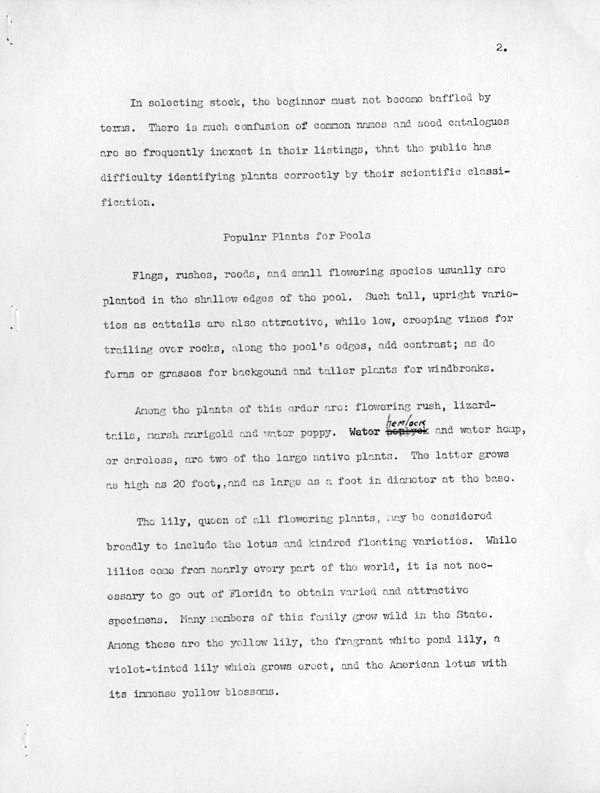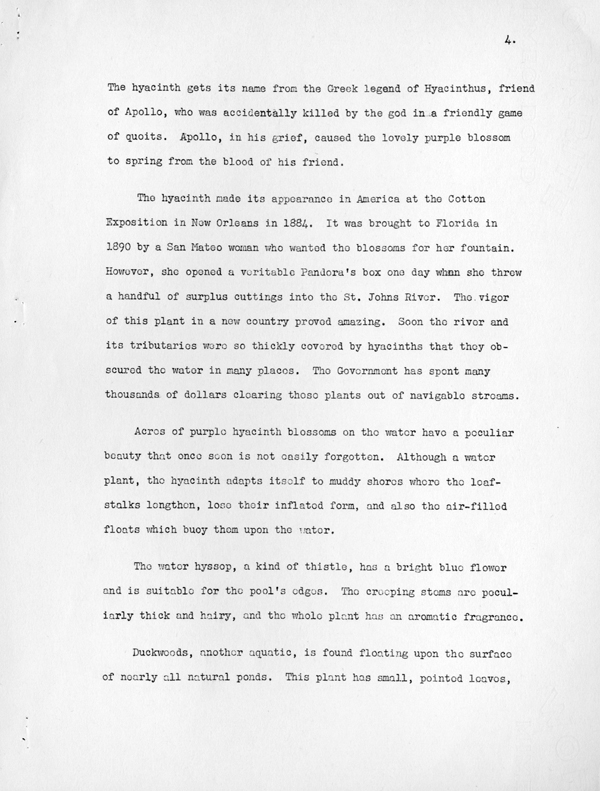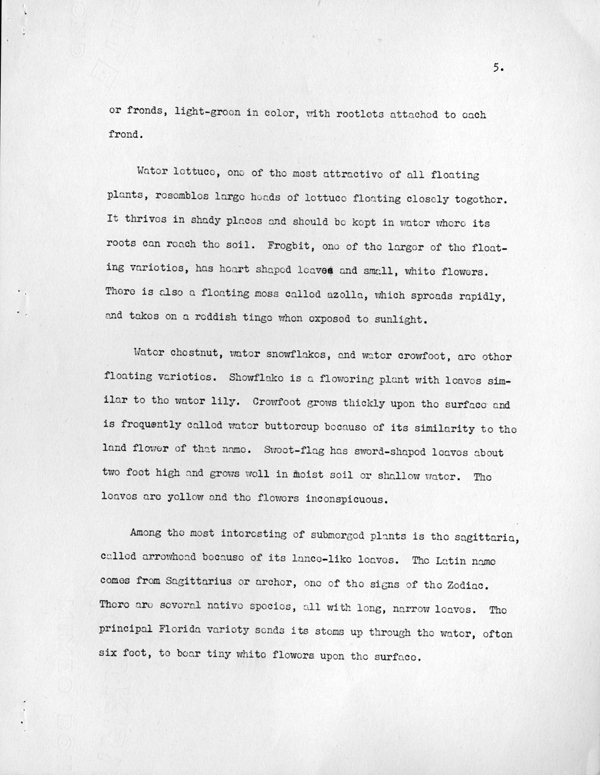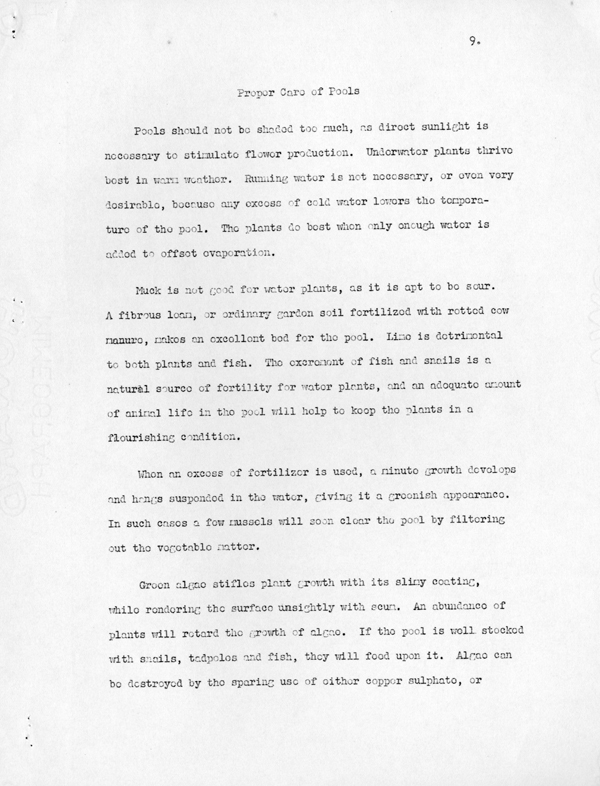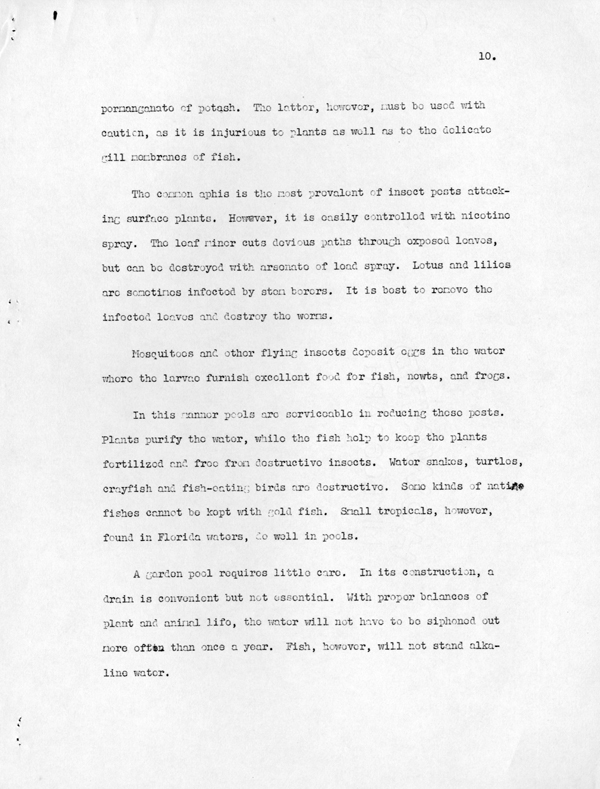Florida Memory is administered by the Florida Department of State, Division of Library and Information Services, Bureau of Archives and Records Management. The digitized records on Florida Memory come from the collections of the State Archives of Florida and the special collections of the State Library of Florida.

State Archives of Florida
- ArchivesFlorida.com
- State Archives Online Catalog
- ArchivesFlorida.com
- ArchivesFlorida.com
State Library of Florida
Related Sites
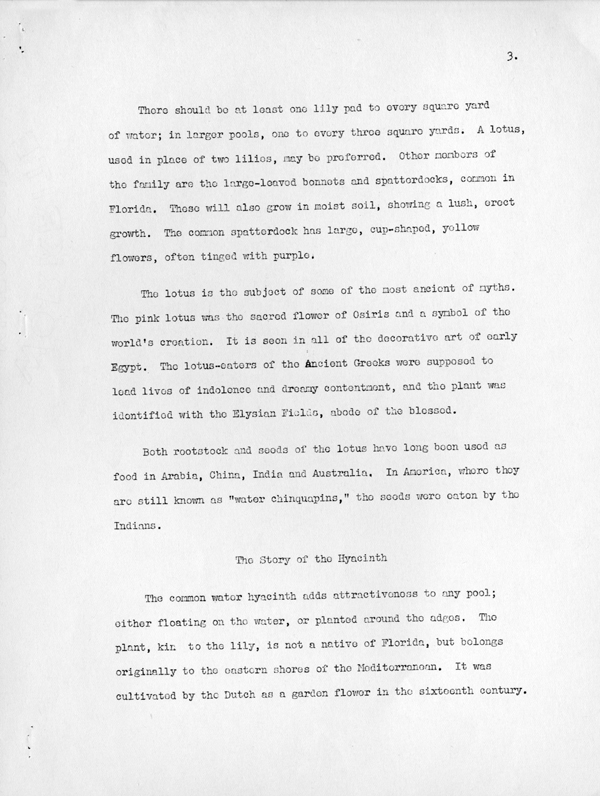
Description of previous item
Description of next item

Title
Published Date
[page 3]
There should be at least one lily pad to every square yard of water;
in larger pools, one to every three square yards. A lotus, used in place of
two lilies, may be preferred. Other members of the family are the large-
leaved bonnets and spatterdocks, common in Florida. These will also grow
in moist soil, showing a lush, erect growth. The common spatterdock has
large, cup-shaped, yellow flowers, often tinged with purple.
The lotus is the subject of some of the most ancient of myths. The
pink lotus was the sacred flower of Osiris and a symbol of the world's
creation. It is seen in all of the decorative art of early Egypt. The lotus-
eaters of the Ancient Greeks were supposed to lead lives of indolence and
dreamy contentment, and the plant was indentified with the Elysian Fields,
abode of the blessed.
Both rootstock and seeds of the lotus have long been used as food
in Arabia, China, India and Australia. In America, where they are still
known as "water chinquapins," the seeds were eaten by the Indians.
The Story of the Hyacinth
The common water hyacinth adds attractiveness to any pool; either
floating on the water, or planted around the edges. The plant, kin to the
lily, is not a native of Florida, but belongs originally to the eastern shores of
the Mediterranean. It was cultivated by the Dutch as a garden flower in
the sixteenth century.
Title
Subject
Description
Source
Date
Contributor
Format
Language
Type
Identifier
Published Date
Image URL
Thumbnail
Transcript Path
Image Path
Image Path - Large
Chicago Manual of Style
Native Pools of Florida. 1940. State Archives of Florida, Florida Memory. <https://www.floridamemory.com/items/show/181528>, accessed 30 November 2025.
MLA
Native Pools of Florida. 1940. State Archives of Florida, Florida Memory. Accessed 30 Nov. 2025.<https://www.floridamemory.com/items/show/181528>
AP Style Photo Citation

 Listen: The World Program
Listen: The World Program


